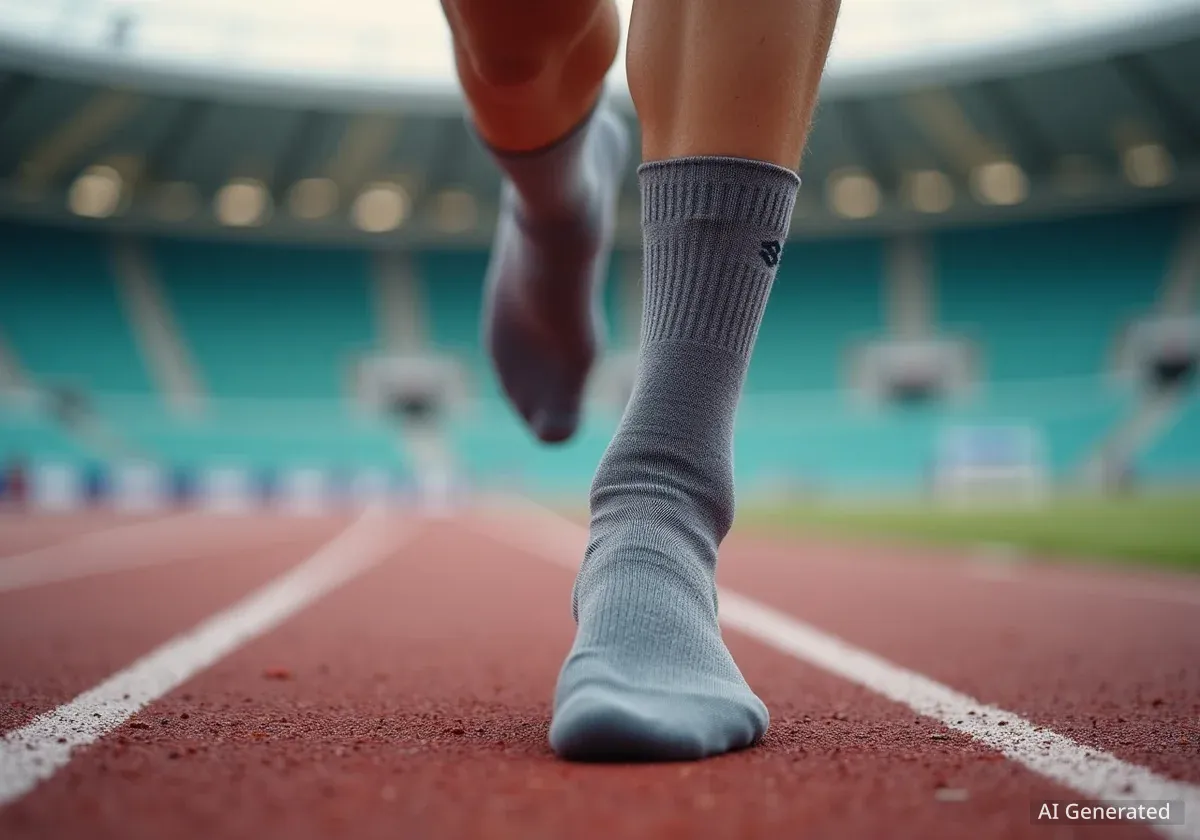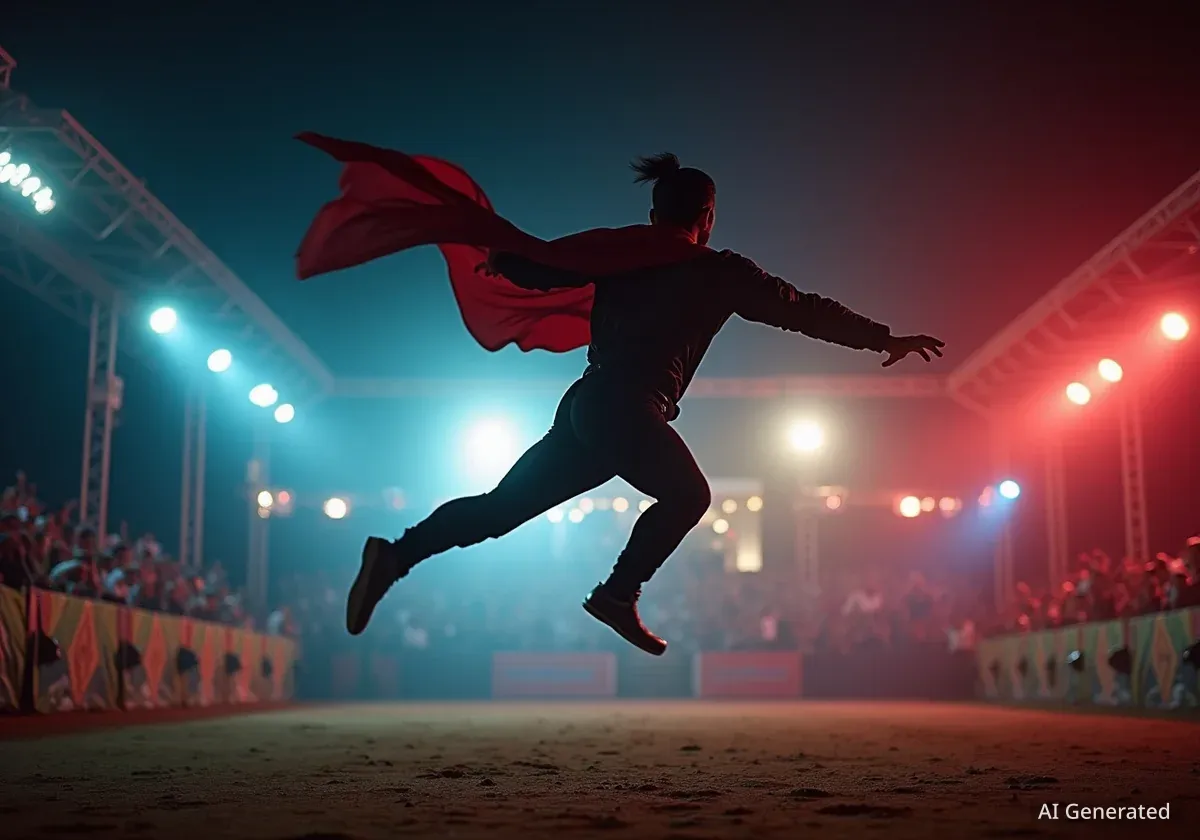Specialized athletic socks are becoming a crucial piece of equipment for athletes across all levels of sport. Beyond simple aesthetics, these garments incorporate advanced material science and design features engineered to enhance performance, reduce fatigue, and prevent common injuries. A closer look at their construction reveals how specific fabric blends and structural components work together to support athletes.
One example in this market is the MadSportsStuff brand, which combines technical features with expressive designs like their Outer Space Galaxy socks. The materials used—primarily polypropylene, nylon, and spandex—are chosen for specific properties that contribute to moisture management, durability, and support, highlighting a broader trend in performance apparel where function and form meet.
Key Takeaways
- High-performance athletic socks use specific fabric blends, such as polypropylene and nylon, to manage moisture and improve durability.
- Key features like arch and ankle compression are designed to reduce muscle fatigue and provide stability during physical activity.
- The market for athletic apparel is seeing a rise in customized and expressive designs, allowing athletes to combine performance with personal style.
- Proper sock construction, including blister control and heel/toe designs, plays a significant role in athlete comfort and injury prevention.
Understanding the Fabric Composition
The effectiveness of a performance sock begins with its material blend. Unlike traditional cotton socks, which retain moisture and can lead to blisters, modern athletic socks use synthetic fibers engineered for specific tasks. The composition is critical for comfort, durability, and support.
The Role of Polypropylene
The primary material in many advanced athletic socks, such as those from MadSportsStuff, is polypropylene, which makes up 77% of the fabric content. Polypropylene is a thermoplastic polymer known for its hydrophobic properties, meaning it repels water. Instead of absorbing sweat, it wicks moisture away from the skin to the outer surface of the sock, where it can evaporate.
This moisture-wicking capability is essential for keeping feet dry. Dry feet are less prone to blisters, fungal infections, and general discomfort during long periods of exertion. Furthermore, polypropylene is lightweight and has excellent thermal insulating properties, helping to regulate foot temperature in various conditions.
Nylon and Spandex for Durability and Fit
Nylon, constituting 17% of the blend, is added for its exceptional strength and durability. It enhances the sock's resistance to abrasion, ensuring it can withstand the constant friction inside an athletic shoe. This is particularly important in high-impact sports like basketball, soccer, and lacrosse.
Elastic and Lycra Spandex, which together make up 6% of the material, provide the sock's stretch and recovery. These elastic fibers allow the sock to conform snugly to the foot and calf without constricting movement. This secure fit prevents the sock from slipping or bunching up, which is a common cause of blisters and discomfort.
Material Breakdown
- 77% Polypropylene: For moisture wicking and lightweight feel.
- 17% Nylon: For strength and abrasion resistance.
- 3% Elastic: For a secure fit and shape retention.
- 3% Lycra Spandex: For superior stretch and flexibility.
Engineered for Athletic Performance
Beyond the materials, the physical design and construction of athletic socks incorporate features specifically aimed at supporting athletes and reducing the risk of injury. These elements work synergistically to provide a comprehensive performance solution.
Compression and Fatigue Reduction
A key feature is targeted arch and ankle compression. This design element provides gentle, consistent pressure to the muscles and ligaments in the foot. According to sports medicine principles, this compression can improve blood circulation, which helps deliver oxygen to the muscles and clear out lactic acid, a byproduct of intense exercise.
By enhancing circulation and providing structural support, compression helps reduce muscle fatigue and soreness. It also offers stability to the ankle joint, potentially lowering the risk of sprains and other common injuries during quick lateral movements.
Features for Comfort and Protection
Several other design features contribute to overall comfort and protection. Blister control is a primary concern, addressed through moisture-wicking fabrics and a seamless toe construction that minimizes friction points. Many performance socks also feature a double welt top, a thicker, folded-over cuff that ensures the sock stays up on the calf without digging into the skin.
A specific heel/toe design provides extra cushioning in high-impact areas while ensuring a proper anatomical fit. Some products also use advanced yarns treated to help control odor-causing bacteria, maintaining freshness during and after use. These seemingly small details collectively make a significant difference in an athlete's experience.
Sizing for an Accurate Fit
An accurate fit is crucial for performance socks to function correctly. Brands typically offer detailed sizing charts based on shoe size to ensure features like arch compression and heel cushioning are properly aligned with the foot. For example, MadSportsStuff provides a range from Small (Youth Shoe Size 12-5) to X-Large (Men's Shoe Size 12+), ensuring athletes can find a size that offers optimal support without being too restrictive.
The Rise of Customization in Team Sports
While technical features are paramount, aesthetics have become an increasingly important factor in the athletic apparel market. Athletes, particularly in team sports, use their gear to express individuality and team spirit. This has led to a surge in socks with vibrant colors and unique designs, such as the galaxy and outer space themes.
This trend allows players in sports like softball, baseball, volleyball, and soccer to stand out on the field or court. It merges the high-performance aspects of the gear with a form of self-expression, making the uniform a more personalized statement. This fusion of function and fashion caters to a generation of athletes who value both performance and style.
Moreover, the production of such specialized apparel within the United States has also become a notable selling point for some brands. A "Made in the USA" origin signifies adherence to specific manufacturing standards and supports local economies, a factor that resonates with a growing number of consumers who prioritize domestic production and quality control in their purchasing decisions.





